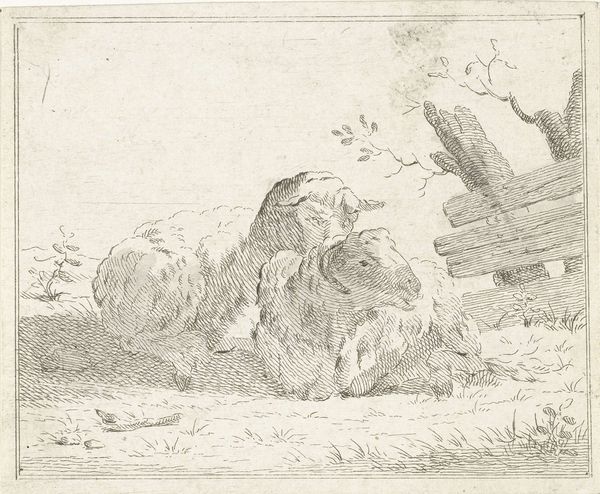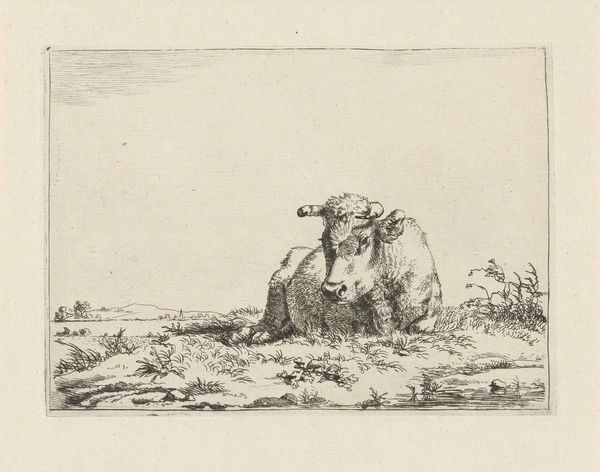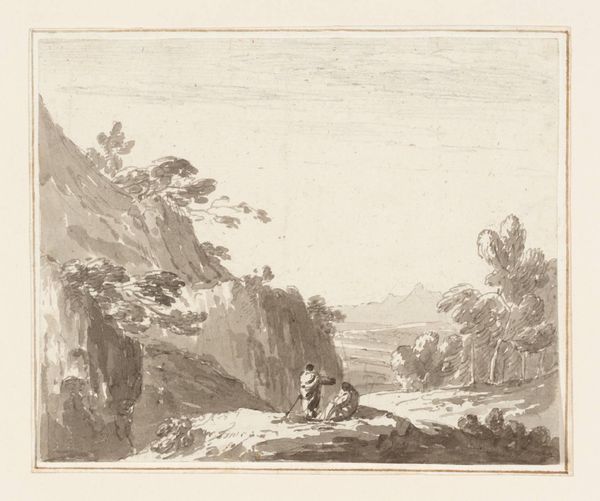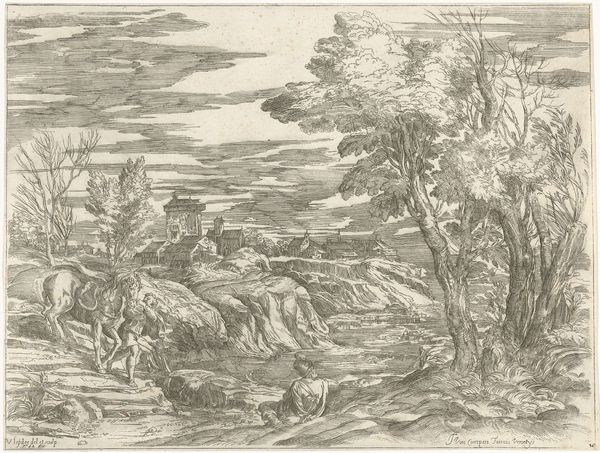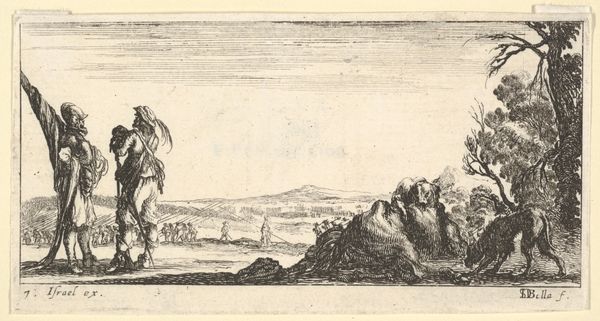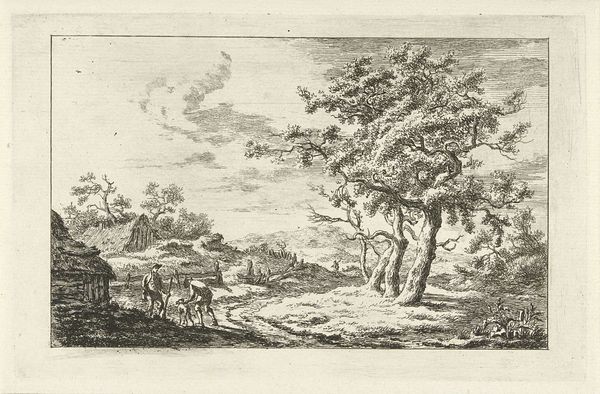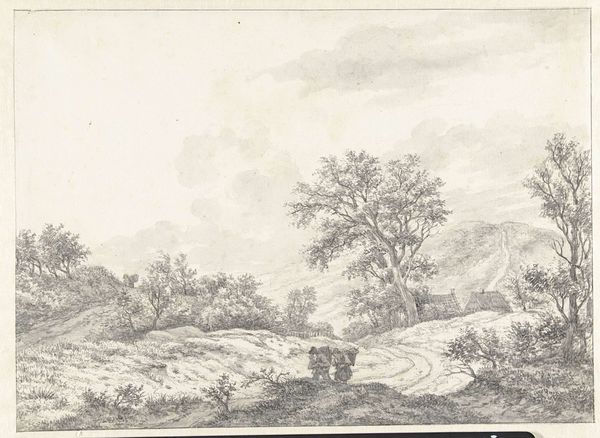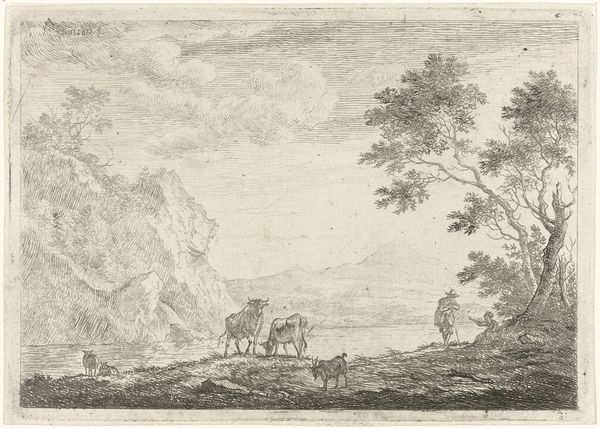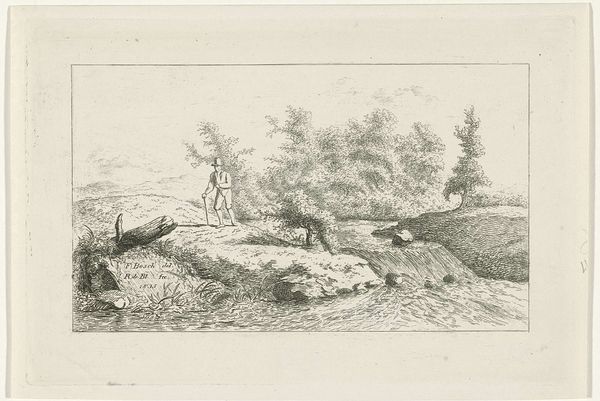
drawing, pencil
#
portrait
#
drawing
#
light pencil work
#
pen sketch
#
pencil sketch
#
landscape
#
personal sketchbook
#
ink drawing experimentation
#
pen-ink sketch
#
pencil
#
sketchbook drawing
#
pencil work
#
sketchbook art
#
realism
#
initial sketch
Dimensions: height 139 mm, width 178 mm
Copyright: Rijks Museum: Open Domain
Curator: What strikes me immediately about this drawing, "Twee liggende schapen," or "Two Lying Sheep," from 1842 by Frédéric Théodore Faber, is the quietness. It’s almost like a lullaby captured on paper. Editor: It really is delicate work, isn’t it? Faber rendered these animals in pencil, using very fine lines, placing them in what appears to be a sprawling landscape. You can see he clearly understood animal anatomy, though I wonder about the intention behind presenting them in such a pastoral scene. Curator: The placement within the landscape, I think, evokes a certain societal relationship to animals, even now. They become part of the idealized rural scene, reflecting a vision of order and productivity that landowners promoted during the early to mid-19th century. Note how the sheep are not individualized; they are, dare I say, commodities nestled in the grass. Editor: Hmmm, maybe. To me, it feels more intimate. I get a sense Faber simply enjoyed observing these creatures. There's a genuine curiosity here, don't you think? The loose strokes suggest immediacy, as if sketched in situ, a stolen moment of beauty and calm. You can practically feel the wool... maybe even smell it, haha! It's so far removed from the idealized, grand landscapes favored at the time. Curator: Ah, but isn’t that part of its subtle politics? By representing "ordinary" sheep rather than dramatic, romanticized visions of nature, Faber might be quietly commenting on the economic realities of the time. Sheep were integral to the Dutch economy, after all. Presenting them so peacefully perhaps obscures the hard labor associated with sheep farming. It serves almost as propaganda to garner admiration and approval of wealth obtained by exploitation. Editor: Okay, I get the socioeconomic angle... I suppose I resist pinning down something that also sings with observation. The light is treated so sensitively here; it’s less about agriculture, and more about atmosphere. The sheep have a warmth from this memory that the landscape behind is absent. The soft pencil feels almost like an extension of their wool. You feel invited to sit and soak it up, too. Curator: Ultimately, Faber’s “Two Lying Sheep” is a deceptively simple piece that resonates in multiple ways. The piece serves as a window into art’s role in representing—and perhaps shaping—our understanding of the natural world and its relationship to economic realities. Editor: I agree! I see it also as a lesson to remember how powerfully personal observation can shape not only what we see but also what stories those images inevitably tell.
Comments
No comments
Be the first to comment and join the conversation on the ultimate creative platform.
